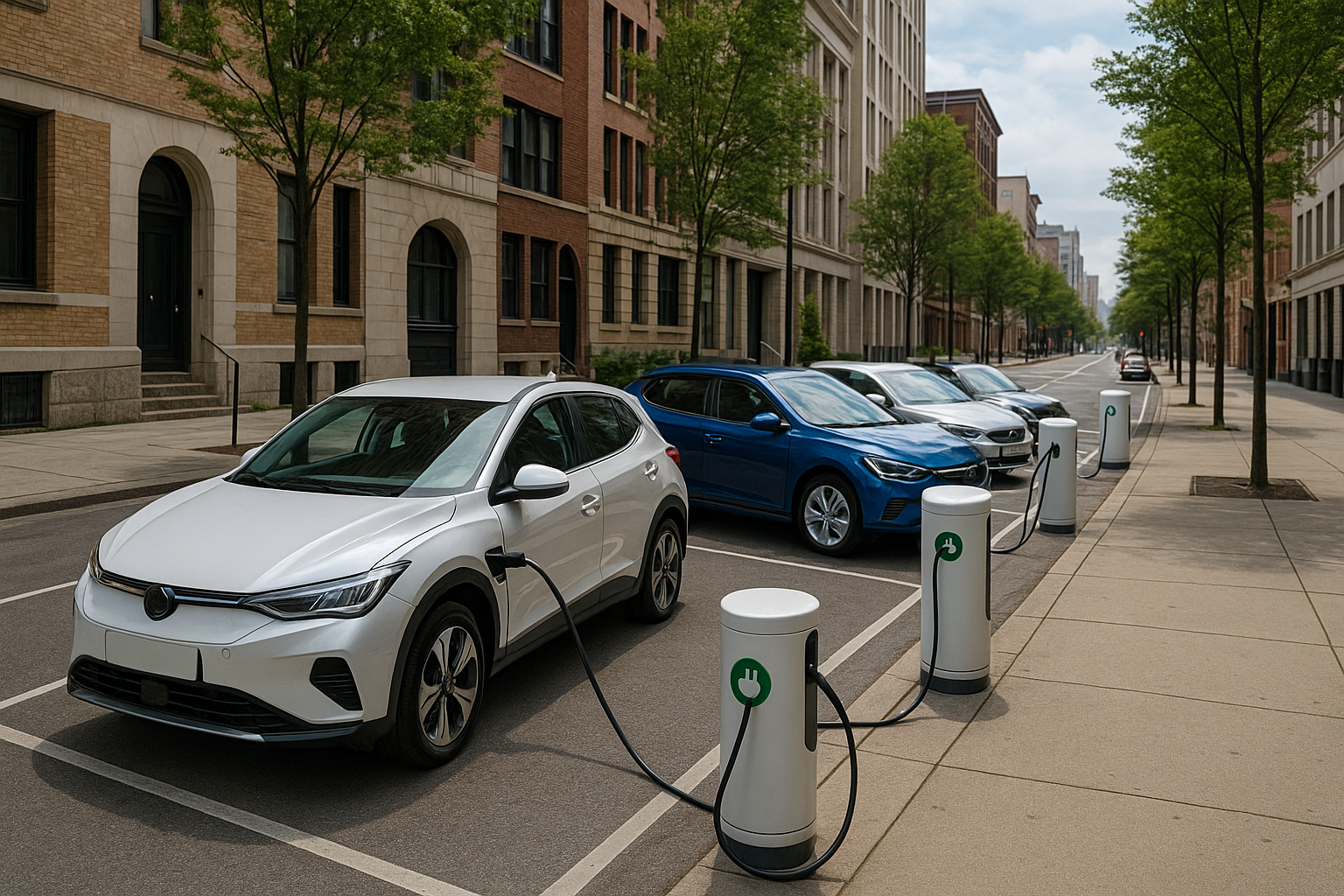A Data-Driven Framework to Deploy Fair and Effective Curbside EV Charging in Cities
Researchers from the University of Illinois Urbana-Champaign developed a data-driven framework for planning curbside EV charging in San Francisco, balancing economic efficiency, environmental benefits, and social equity. Their study shows that high-demand scenarios maximize cost and energy savings, while high-need scenarios deliver greater fairness and health benefits for underserved neighborhoods.

Researchers Ruolin Zhang and Eleftheria Kontou from the Department of Civil and Environmental Engineering at the Grainger College of Engineering, University of Illinois Urbana-Champaign, have produced a new study that tackles one of the most pressing challenges of sustainable urban mobility: where to place curbside electric vehicle (EV) chargers in dense cities. With EV ownership expanding rapidly and climate targets looming, access to charging infrastructure is no longer just a technical issue but one tied to equity, economics, and environmental justice. The authors use San Francisco as a case study, presenting a model that balances these competing priorities and highlights the trade-offs facing cities worldwide.
The Urban Charging Dilemma
In many cities, residents of multi-unit dwellings lack home garages, leaving curbside charging as their only option. This public space, however, is already under strain, serving cars, delivery vans, cyclists, and pedestrians. For years, San Francisco resisted curbside charging under its Transit First policy, which gave priority to public transport and active mobility. But growing demand forced a shift, and in 2024, the San Francisco Municipal Transportation Agency launched a pilot program to explore curbside charging feasibility. The question now is not whether cities will build curbside chargers, but how to deploy them strategically and fairly.
A Framework Built on Three Pillars
The study introduces a multi-criteria decision-making framework anchored in three pillars: economic demand, fairness, and environmental impact. Economic criteria capture commuter flows, residential needs, and commercial vehicle use. Fairness criteria emphasize equitable access, especially near hospitals, schools, and underserved neighborhoods. Environmental criteria avoid flood-prone zones and prioritize areas with poor air quality, where public health would benefit most. Four scenarios are tested: the entropy weight method, which derives weights from data; the equal weight method, which balances all factors; the high demand scenario, maximizing usage and revenue; and the high need scenario, targeting equity and environmental justice. The resulting maps show stark differences: while downtown commercial zones dominate under high demand, neighborhoods like Bayview, Lone Mountain, and Inner Sunset are prioritized under high need.
Efficiency Versus Equity
The findings reveal a clear tension. The high demand scenario generated the greatest energy savings and fuel cost reductions, outperforming other approaches by up to 57 percent in environmental benefits and 17 percent in economic gains. Concentrating chargers in high-traffic zones ensures utilization and efficiency. Yet this leaves gaps in underserved communities. The high need scenario, though less efficient overall, spreads benefits more evenly and aligns reductions in harmful emissions with areas suffering the worst air quality. The entropy and equal weight methods offered balanced outcomes but lacked sharp focus. Beyond emissions, the study found that downtown areas saved the most on fuel costs, while suburban neighborhoods gained relatively more in the high need scenario due to lower electricity prices. Social equity analyses confirmed that high-demand strategies clustered accessibility improvements in already privileged zones, while the high need scenario reduced disparities across the city.
Clustering Neighborhoods for Smarter Policy
To sharpen recommendations, the researchers classified San Francisco’s neighborhoods into six clusters based on demographics, housing density, and parking regulations. Categories ranged from “Strictly Regulated Downtown” with heavy commuter pressure to “High Density Low Income” neighborhoods and “Affluent Residential” enclaves. Each cluster presents unique challenges. Downtown may require regulatory adjustments like extended EV parking durations, while dense residential areas with many multi-unit dwellings should be prioritized for new chargers. Low-income areas may need incentives to ensure equitable rollout, while affluent neighborhoods could be encouraged to rely more on private investment. This clustering approach underscores that curbside infrastructure planning must be context-sensitive.
Policy Roadmap for Cities
The study recommends that cities prioritize high-density residential areas where private charging is scarce, adjust parking rules to allow longer charging durations, and establish dedicated EV-only curb spaces. Incentive programs are vital for installations in underserved neighborhoods, while data on congestion, parking occupancy, and demographics should drive planning. Although the analysis does not distinguish between slow and fast chargers or fully account for commercial fleets and other curb uses, the framework offers a transferable model for cities worldwide. The authors caution that while curbside charging supports electrification, cities must balance this expansion with broader sustainability goals such as reducing car dependency and promoting public transit.
In the end, the study makes clear that curbside charging is both a technical and political choice. The University of Illinois Urbana-Champaign researchers provide policymakers with a transparent, data-driven framework that helps weigh efficiency against equity, ensuring that the EV transition contributes not only to climate goals but also to social justice in the urban landscape.
- FIRST PUBLISHED IN:
- Devdiscourse










